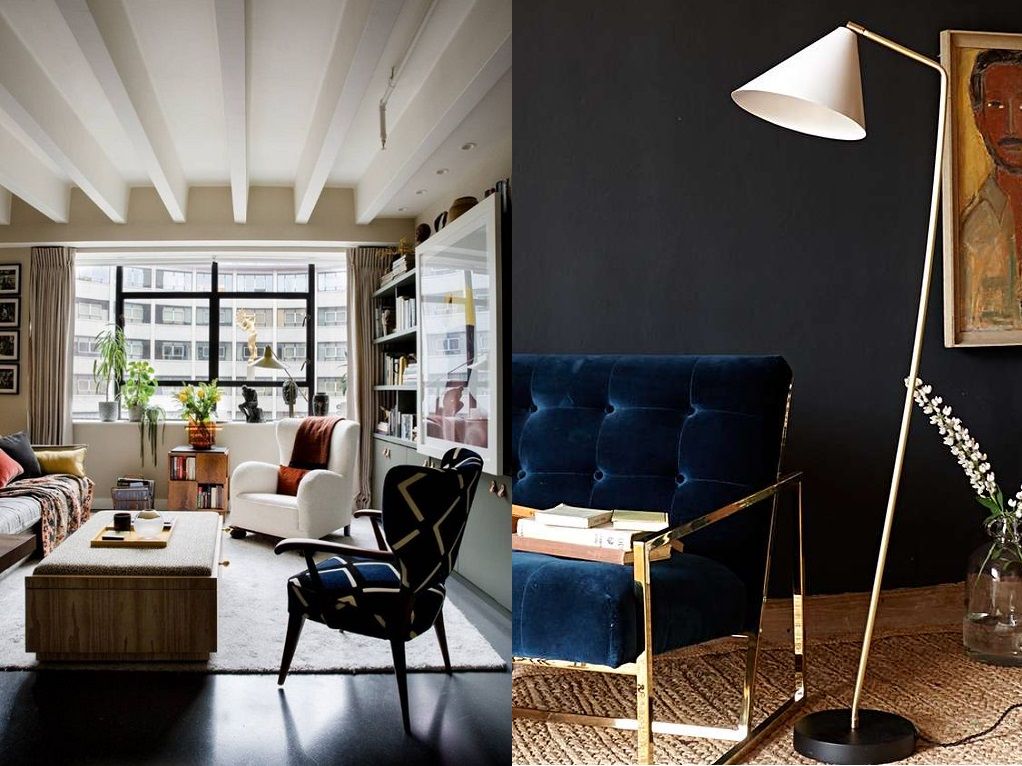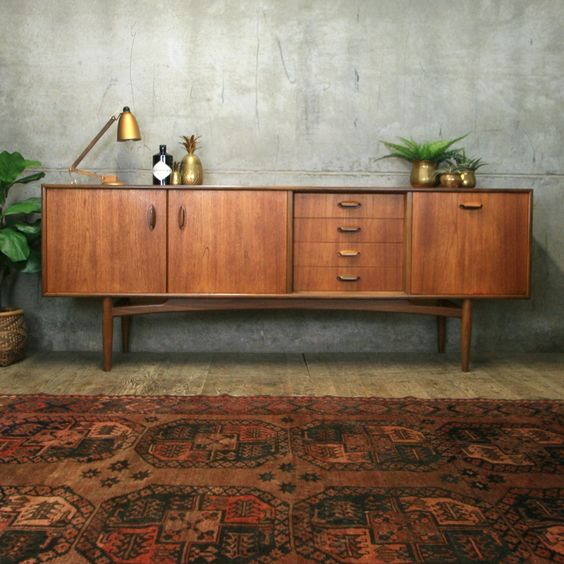
In our new series we’re looking at some of the great interior design trends and styles, and giving tips on how you can use them for inspiration in your own home (with a special emphasis on lighting, of course).
First up, a trend that never seems to die - the Mid-Century Modern style, and how to light it...
Design trends may come and go but some have a way of staying the course and finding favour for decades, even across centuries. As we move into the third decade of the 21st century, our love affair with Mid-Century Modern design shows no sign of fading. So what exactly is Mid-Century Modern and what are its features? For inspiration, we’re taking a look at some modernist classics and featuring some lighting ideas to give your home that extra touch of mid- century style. Apartment in Bermondsey - @themodernhouse
Apartment in Bermondsey - @themodernhouse
When exactly was the ‘Mid-Century’?
While some argue that the Mid-Century Modern period runs from1933 to 1965, others insist that it is limited to just one post-war decade – 1947-1957. A more useful approach, perhaps, is to look at its key features in furniture design and architecture, where we’re on more straightforward ground. If you’re keen on Scandinavian design or a fan of the stylish sets of Mad Men, Mid-Century Modern, with its emphasis on function, organic influences, natural materials, neutral tones, clean lines, craftsmanship, and universal appeal, will resonate for you. It grew out of early 20th century Modernism and design movements such as that pioneered by the Bauhaus, but embraced the new materials and technologies that were a feature of the post WWII years. Formica table anyone?
Furnishing the Mid-Century Modern home
The giants of Mid-Century Modern furniture design tended to be American (Charles and Ray Eames, for example), Scandinavian (Eero Saarinen)- or Italian (Gio Ponti). A budget version of Danish designer Arne Jacobsen’s iconic plywood 3017 chair took on an iconic status of its own when, in 1963, at the height of the Profumo affair, photographer, Lewis Morley, used it as a prop during a photo session with Christine Keeler. (Chair, image and contact sheet now in the V&A collection – full story here…) Arne Jacobsen chair
Arne Jacobsen chair
In the UK, Mid-Century Modern was also influenced by the World War II Utility furniture scheme, which provided essential items for people who had lost their homes in the Blitz. Utility furniture was produced using the slenderest of resources, so simplicity and low cost were of the essence. Several of its designers went on to work for some of the country’s most successful furniture companies of the post-war years. You might be too young to have grown up with Mid-Century Modern design classics, but your parents or grandparents could well have fond memories of Ercol or G Plan furniture. Then there was Elliotts of Newbury, a company that came to furniture via aviation – and brought Danish furniture design to the UK. Not only did these companies produce great designs, their furniture was top quality and built to last. If you’re lucky older family members may still have some of these timeless pieces, many of which are now collectors’ items.
 G Plan teak sideboard
G Plan teak sideboard
 Dining chairs by Elliots of Newbury
Dining chairs by Elliots of Newbury
But even if those Mid-Century Modern family heirlooms have long since disappeared, you can still find pieces at local auction houses, although you might have to be prepared to do some restoration and repairs. If furniture DIY is not your thing, check out small, specialist companies like Grufferty’s for beautifully restored vintage pieces. Distinctive features include light woods or teak, curved lines, peg legs, and metal frames; Mid-Century Modern furniture was delightfully free of all the elaborate – and dust-collecting - intricacy of Victorian and Edwardian designs. People’s lives, especially women’s lives, were changing, and this fresh-looking, vibrant furniture reflected those changes.
Designing the Mid-Century Modern home
The new houses, maisonettes and flats designed and built during this period illustrate these changes too – streamlined, functional, clutter free, easy on the eye, and easy to maintain. Nowhere was this new approach to domestic life more in evidence that in the light and airy homes designed by architect Eric Lyons for Span Developments, whose estates sprang up across London and the South East. Golden Lane
Golden Lane
The City of London’s Golden Lane (1950s) and Barbican (1960s-‘70s) Estates are among the best known examples of Mid-Century Modern architecture in the UK. Designed by Chamberlin, Powell and Bon, the two estates transformed large areas of the City that had been destroyed by bombing during WWII. They are now Grade II listed and display all the confidence and commitment to a better future that is the Mid-Century Modern’s hallmark. The best architecture of the period offers us the same simple, streamlined features that we associate with its furniture. But a lot of thinking goes into creating simplicity…as Mies van der Rohe observed, ‘An interesting plainness is the most difficult and precious thing to achieve.’
Lighting the Mid-Century Modern home
 Bow tie chandelier
Bow tie chandelier
If you are going for the total Mid-Century Modern look – or even a hint of it – in your home, one of the keys to making it work is lighting. This was the era when pendant lights and table and floor lamps really were making an impact and were an integral and essential part of interior design. Here are some tips (with Pooky examples) for introducing a bit of Mid-Century Modern-style lighting – whether you want a complete retro feel or want something a contemporary twist:
1) Get a hood
 Galore in white
Galore in white
The hooded floor lamp or table lamp is a classic Mid-Century Modern look. You don’t have to go the full retro-furniture route to introduce that modernist feel - a floor lamp in the right place will do the trick. The Galore is a perfect example.
2) Go large on pendants
Large, low-ish pendant shades give the dining room that 1960s style. You can use contemporary materials but keep the look - try our larger jute pendant, for example, which would cast the perfect mellow glow over a vintage teak dining table.
3) Bold colours
 Nellie
Nellie
You don’t need only whites and neutrals for a mid-century-inspired scheme – bold and primary colours work well. The Nellie table lamp – at the mustard end of neutral – would fit very comfortably into your Mid-Century Modern sitting room. You can see Nellie paired with a wide range of shades, including parchment, silk, linen and cotton, here, to help you decide what will work best with your choice of décor. How about this terracotta ‘chambray’ linen empire style?
4) Simple wall lights
 Nevada
Nevada
Brass wall lights in simple, functional shapes are the ticket for a touch of Mid-Century Modern. Something like the Nevada will do the job - simple, unobtrusive, very cool.
5) Use desk lights liberally
 Bow tie desk light
Bow tie desk light
The study or office is often the easiest room to go all modernist - a retro desk, armchair, and of course a desk lamp. But you can put mid-century desk lights all over your house for easy, portable mid-century style. And where better to read your back copies of that champion magazine of Mid-Century Modern, Wallpaper* than under Pooky’s bow tie lamp? So very Sixties! Let Pooky light up your Mid-Century Modern home – browse our full range of affordable designer lighting here.


